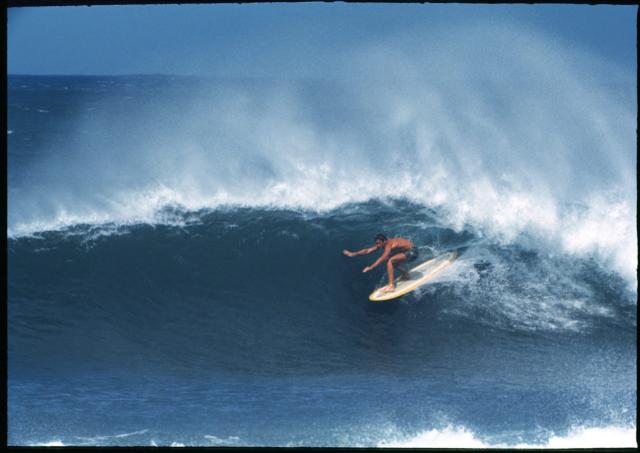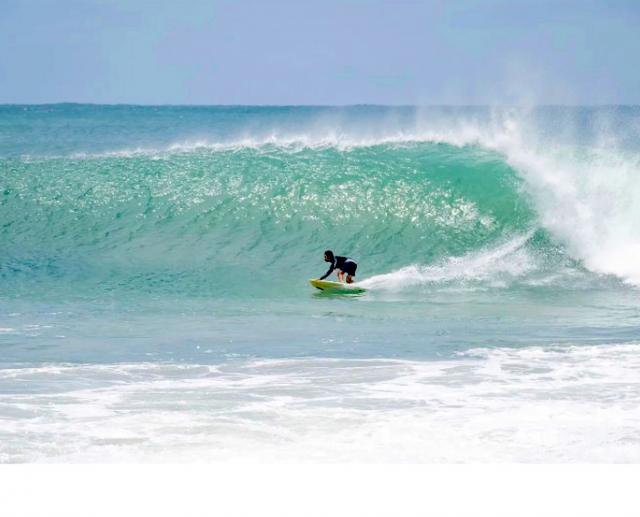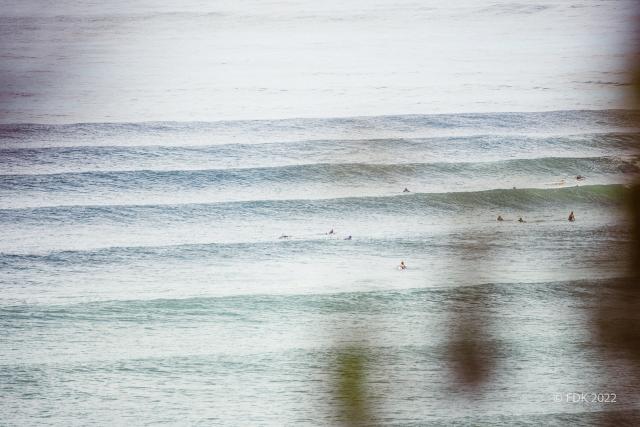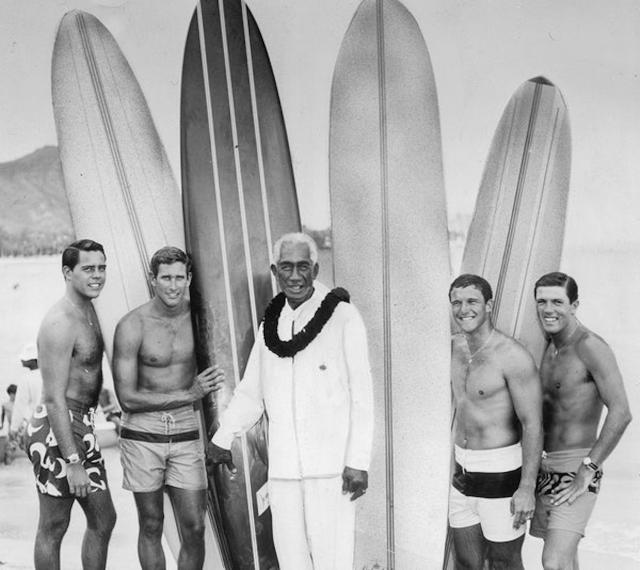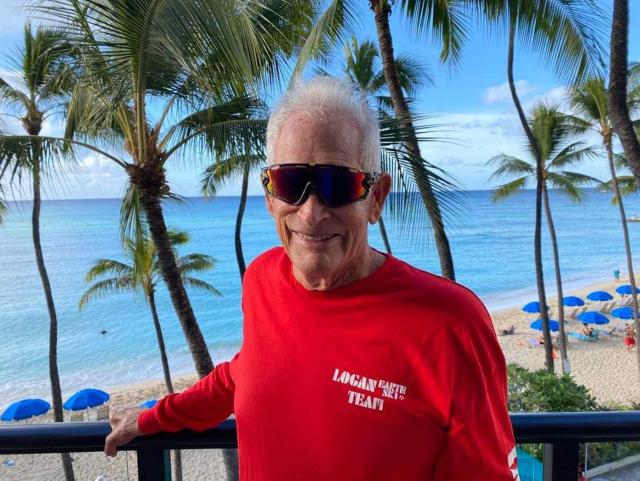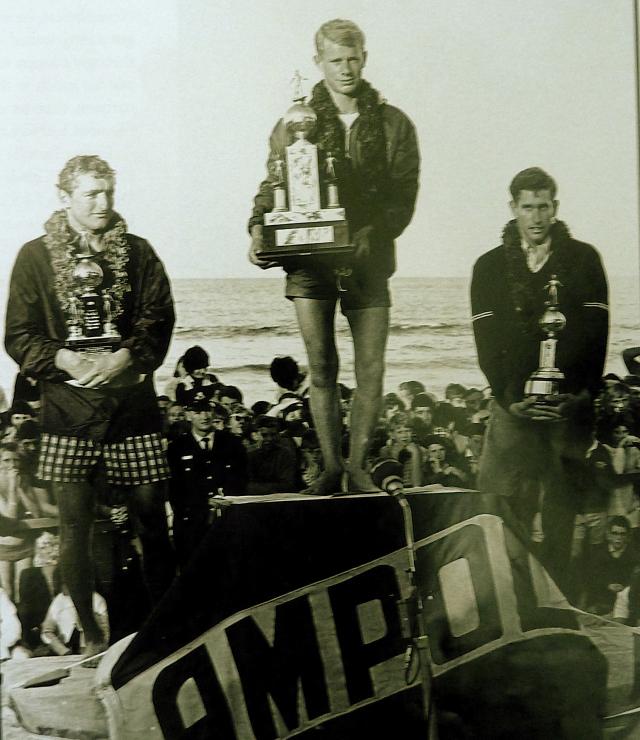The news a few weeks back that the legendary Hawaiian-born Joey Cabell had suffered a cardiac arrest in an Aspen restaurant, and had been given a one per cent chance of survival by his doctors, came as a huge shock.
Within a day the story came out from wife Yana, via Cabell friend and Bondi legend John Red Ted Sullivan: “It happened at Clarke’s Restaurant in Aspen, which happens to be across the road from the fire department, and they did CPR and put the paddles on to revive him. He has three broken ribs from all the work they had to do on him and he was gone for quite a while. The doctor in ICU at Glenwood Springs Vale Hospital said that the chance of him surviving was less than one per cent.”
But Cabell has always been a larger than life figure, so the follow-up news a few days later, that he was off life support and recovering well, having been fitted with a combination pacemaker/defibrillator, was a better fit. Well of course the 84-year-old was going to recover – he is Cabell after all.
The surfer/skier/restaurateur/bon vivant/adventurer was a boyhood hero of mine, even when he was accused of unsportsmanlike behaviour after finishing third behind Midget Farrelly at the first world surfing championships at Manly in 1964. Sure, Joey dropped in on the other finalists almost every wave in the final, but closer examination of the whole event showed that in those days, before interference was really a thing, everyone dropped in. Joey just did it better.
The thing is, Cabell could so easily have been surfing’s first world champion – he comprehensively out-surfed Midget for the first 50 minutes of the hour-long final but then Midget woke up and scored a buzzer-beater to tighten things up. Joey probably still had the points to win but head judge Phil Edwards, not a noted Cabell fan, instructed his judges to enforce the interference rule to its harshest extent.
“I didn’t even know there was an interference rule,” rookie judge the late Joe Larkin once told me. Cabell finished third behind Midget and Mike Doyle.
This is ancient history, of course, but the question is, would Joey Cabell have had a better life if he’d been crowned world champion?
My answer is, I don’t think that’s possible.
His surfing was always fast and elegant, often in a parallel stance like a skier, his arms wide and palms splayed for balance in critical sections. A decade before I christened Mark Richards the wounded seagull for his low-centre-of-gravity wingspan turns, someone else, possibly John Witzig, had christened Joey the gazelle. It was a perfect fit.
Cabell swooped all over the face of large waves, looking like the fastest surfer alive. And he kept winning contests, including the Peru International and the Makaha International.
But the truth was that Cabell had another life going even before he came to Australia in 1964.
In 1962, aged just 24, he became a founding partner in a restaurant called The Charthouse in the ski resort of Aspen, Colorado. After losing to Midget in Manly he forsook the surf and spent two years in Aspen, skiing and developing a Charthouse chain, with additional restaurants in Redondo Beach and Newport in California and at home in Honolulu.
Cabell was the key man in creating a Charthouse look and feel that instantly put you in paradise the moment you walked in the door, and let’s face it, looking out over Ala Moana yacht harbour from the Honolulu place, you more or less were. Joey’s style and sensibilities were a large part of the Charthouse success story, but a decade in he cut and run, only holding onto the Hawaiian property, which has since had its ups and downs, but is renewed and going strong today. Much like its founder.
As part of the media contingent covering the North Shore pro surfing contests through the late 1970s and early ‘80s, I ate regularly at the Ala Moana Charthouse and got to know genial Joey a bit, but it had been a long time between drinks when I phoned him in 1999 and invited him to Noosa to participate in a recreation of the 1964 world title final at our surf festival. Joey struck a hard bargain – he didn’t succeed in the restaurant game by being an easy touch – but I got him here, along with the four other living finalists.
I tried to get him to drop in on everyone again, but he was the perfect gentleman throughout his stay, in and out of the surf, as well as the life of the party.
The last time I saw Cabell, along with wife Yana, was at the premiere of Jack McCoy’s Blue Horizon movie at the Hilton Hawaiian Village in Waikiki in 2013. The place was alive that night, and we shared some laughs and memories with so many of the greats of Hawaiian surfing. No one was more charming, suave and effervescent than my boyhood hero at 75.
Joey is now back in Hawaii and recovering well.
FOOTNOTE: As we bid goodbye to April do we also say sayonara to this incredible run of swell we’ve enjoyed right through autumn so far? I hope not, but just in case it all goes to hell in a hay cart, allow me to share a little April love via the great images of local lens’ ladies Cindy Grzesiak (@cinderpixx_surf) and Fenna de King (fennadeking.com). They both do lovely work, so check them out.

